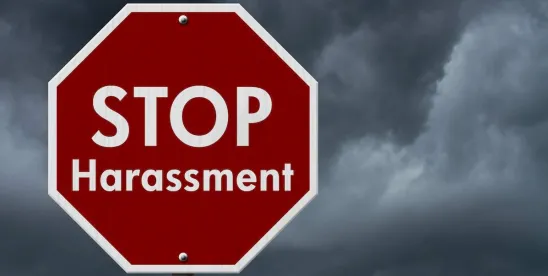The U.S. Court of Appeals for the Sixth Circuit recently held that an employer will be liable for a customer’s harassment of an employee only when it intends for such harassment to occur. This ruling diverges sharply from the stance of the U.S. Equal Employment Opportunity Commission (EEOC) and all other federal appellate courts that have considered the issue, making it more challenging—at least in the Sixth Circuit—to establish liability for harassment by customers and other third parties.
Quick Hits
- In Bivens v. Zep Inc., the Sixth Circuit found that an employer is not responsible for harassment by clients or customers if it did not intend to permit the harassment.
- The case involved a sales representative who sued for sexual harassment based on actions by her employer’s customer.
- The Sixth Circuit’s decision, which applies to employers in Kentucky, Michigan, Ohio, and Tennessee, breaks with the position of multiple other circuits.
Background on the Case
The employer manufactures and distributes cleaning products to retail and commercial businesses. While visiting a motel customer on a sales call, the motel’s manager propositioned the employer’s sales representative in his locked office. The sales representative refused the motel manager and informed her supervisor about the incident. The supervisor assigned the motel client to a different sales team, ensuring that the employee would not have to interact with that client again. However, around the same time, the employer conducted a reduction in force (RIF), which included the sales representative.
The sales representative filed suit under Title VII of the Civil Rights Act of 1964 and state law, alleging that her employer was liable for failing to prevent the client’s sexual harassment and that it retaliated against her for reporting the harassment by including her in the RIF. Both Title VII and state law prohibit sexual harassment and retaliation against employees for engaging in protected activities, such as reporting discrimination or harassment.
The Sixth Circuit’s Ruling
The Sixth Circuit found that for an employer to be held liable for customer harassment, it must have intended for the harassment to occur or have been willfully indifferent to the harassment, thereby effectively condoning it. This requirement of intent or willful indifference sets a high bar for establishing employer liability in cases of customer (or nonemployee) harassment. In this case, the Sixth Circuit affirmed the federal district court’s dismissal of the sales representative’s claims, finding no evidence that the employer desired such an interaction to occur or was substantially certain that it would occur.
The Sixth Circuit’s ruling stands in stark contrast to the positions taken by the EEOC and other circuit courts, including the First, Second, Eighth, Ninth, Tenth, and Eleventh. Historically, these circuits and the EEOC have held that employers can be liable for the conduct of nonemployees, applying the same negligence standard of liability for coworker harassment. Under that standard, an employer is liable only if the employer knew or should have known about the conduct and failed to take immediate and appropriate action. This standard does not require proof of intent or willful indifference, making it easier for employees to hold employers accountable.
The Sixth Circuit rejected the analogy of customers to coworkers, commenting that “this analysis has its warts.” It noted a difference between coworkers and customers: coworkers and supervisors are agents of the employer by virtue of their employment, while customers are not. Therefore, the coworker standard of liability was not appropriate for assessing the conduct of nonemployees.
In noting that its decision departed from EEOC guidance, the Sixth Circuit cited to the Supreme Court of the United States’ decision in Loper Bright Enterprises v. Raimondo, which overruled the Chevron defense doctrine that courts should defer to reasonable agency interpretations of ambiguous statutes. In doing so, the Sixth Circuit reaffirmed the judiciary’s responsibility to “always … independently interpret the statute.”
Next Steps
The Sixth Circuit’s decision has several important implications for employers:
- Higher Burden of Proof: Employees—at least in the Sixth Circuit—now face a higher burden of proof to establish employer liability for customer and other third-party harassment. They must show the employer intended that the harassment would happen or was willfully indifferent to it.
- Policies and Training: Employers may wish to review their written policies and training programs to ensure they clearly address harassment and set forth an effective complaint procedure. It is important for employers to respond promptly and effectively to complaints of harassment and ensure that employees do not face retaliation for making such complaints.
- Possible Changes in Precedent: This ruling could influence future cases and potentially prompt a reevaluation of standards in other jurisdictions. Staying informed about legal developments in this area can be important for understanding potential implications.
The court’s decision marks a significant shift in the legal landscape of employer liability for customer harassment and serves as a reminder of the constantly evolving nature of employment law.






 />i
/>i

